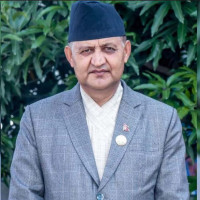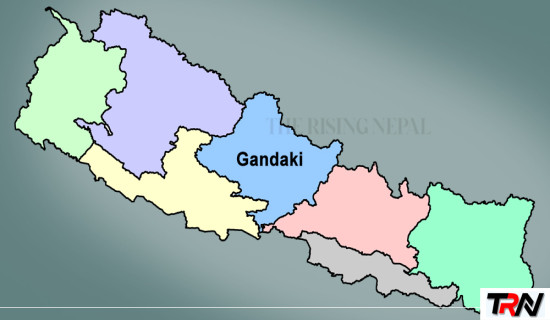- Saturday, 2 August 2025
New national demographic policy unveiled
By A Staff Reporter,Kathmandu, July 12: Prime Minister KP Sharma Oli has said that human existence could be at risk if population growth does not go hand-in-hand with national development and prosperity. He urged people to marry in time and focus on having children.
Speaking at the launch of the National Population Policy 2082, organised by the Ministry of Health and Population on the occasion of World Population Day on Friday, Prime Minister Oli said that the pace of development and population growth must be balanced. He emphasised that everyone should see raising children as a responsibility to the Earth.
The policy was officially launched by Prime Minister Oli in the presence of Health and Population Minister Pradeep Paudel.
“Human beings give meaning to every country and the Earth itself. Without people, there would be no country. We must take the right steps and adopt suitable policies to protect the existence and wellbeing of humanity,” the PM said.
He added, “Human life is the most valuable creation. Those who kill others for personal gain should stop. There is no point holding discussions and seminars about population while continuing to build weapons of mass destruction. This contradiction threatens human survival. We must not let demographic imbalance continue.”
Referring to the legal provision that allows marriage after the age of 20, the Prime Minister urged people to marry on time and have three children by the age of 30. “Do not get distracted by songs that say enjoy life after 40,” he said.
He expressed concern that some awareness campaigns, like telling people not to hope for children who “cover the hills”, have had the opposite effect, leading to quite low birth rates.
Pointing to negative population growth in the developed countries, he warned that even advanced nations are facing threats to human survival. Therefore, he stressed the need to implement this new policy to ensure proper population management.
The country has launched a new national population policy, replacing the old one introduced in 2014. This new policy is all about using the country’s large youth population to boost the country's development.
It also aims to create a better system for managing the population that fits with Nepal's overall goals for growth. The main idea is to guide the nation towards lasting success as its population changes.
The new population policy launched on Friday addresses critical challenges facing the country’s population dynamics. With a current population of around 31.96 million, the country’s population is expected to grow by around 299,000 in 2025, reaching an estimated 32.1 million in 2026.
According to the report, the median age of the population is 30.2 years in 2025, reflecting a youthful demographic. However, concerns about youth unemployment, which stood at 20.82 per cent in January 2024 and the increasing elderly population (up from 8.1% in 2011 to 10.2% in 2021 for those aged 60 and above) underline the urgency of strategic population management.
The policy seeks to create a sensitive and responsive population management system integrated with broader development efforts. This includes reforming policies to balance fertility with population growth and integrating population concerns into all economic development aspects.
The objective focuses on social justice and reproductive rights. It includes promoting gender equality and social inclusion, protecting the rights of children, and safeguarding reproductive rights. While over half of Nepal's population (51.1%) is female, the Gender Development Index (GDI) was 0.885 in 2022 (compared to 0.632 for males), indicating persistent gender disparities. The UNFPA Nepal Annual Report 2024 highlights efforts to improve sexual and reproductive health services, with significant supplies of family planning commodities and screenings for conditions like pelvic organ prolapse.
The new policy directly confronts challenges such as ensuring equitable access to quality reproductive health, education and social security; realising the rights of gender and sexual minorities; and effectively utilising the potential of both youth and senior citizens. It also stresses the need to incorporate demographic indicators into all planning and programme development.
Significantly, the policy supports the country’s ambitious goal of graduating from a Least Developed Country (LDC) to a middle-income country by 2026, the report said.
Currently, 34 districts in the Himalayan region and 319 local levels are experiencing a negative population growth rate.
Minister Paudel proposed a new policy to tackle these changing problems. His proposal was approved in the Cabinet meeting last Monday, leading to the announcement of this updated policy.
This policy builds upon the earlier population policy introduced in 2014 (2071 BS) and addresses new challenges. It also aims to benefit from the growing number of young people in the country.
The policy sets a goal to increase the current declining fertility rate from 1.94 to 2.1, which is considered a stable rate for population growth. It also aims to take advantage of the current large proportion of the population (61.9%) aged 15 to 59, which is seen as an opportunity to support economic growth. The policy highlights the need to plan based on the current population situation and encourages coordination among all three levels of government -- federal, provincial, and local.
It proposes forming a National Population Steering and Coordination Committee under the leadership of the Minister for Health and Population, which will provide guidance and help manage population-related issues across all levels.















